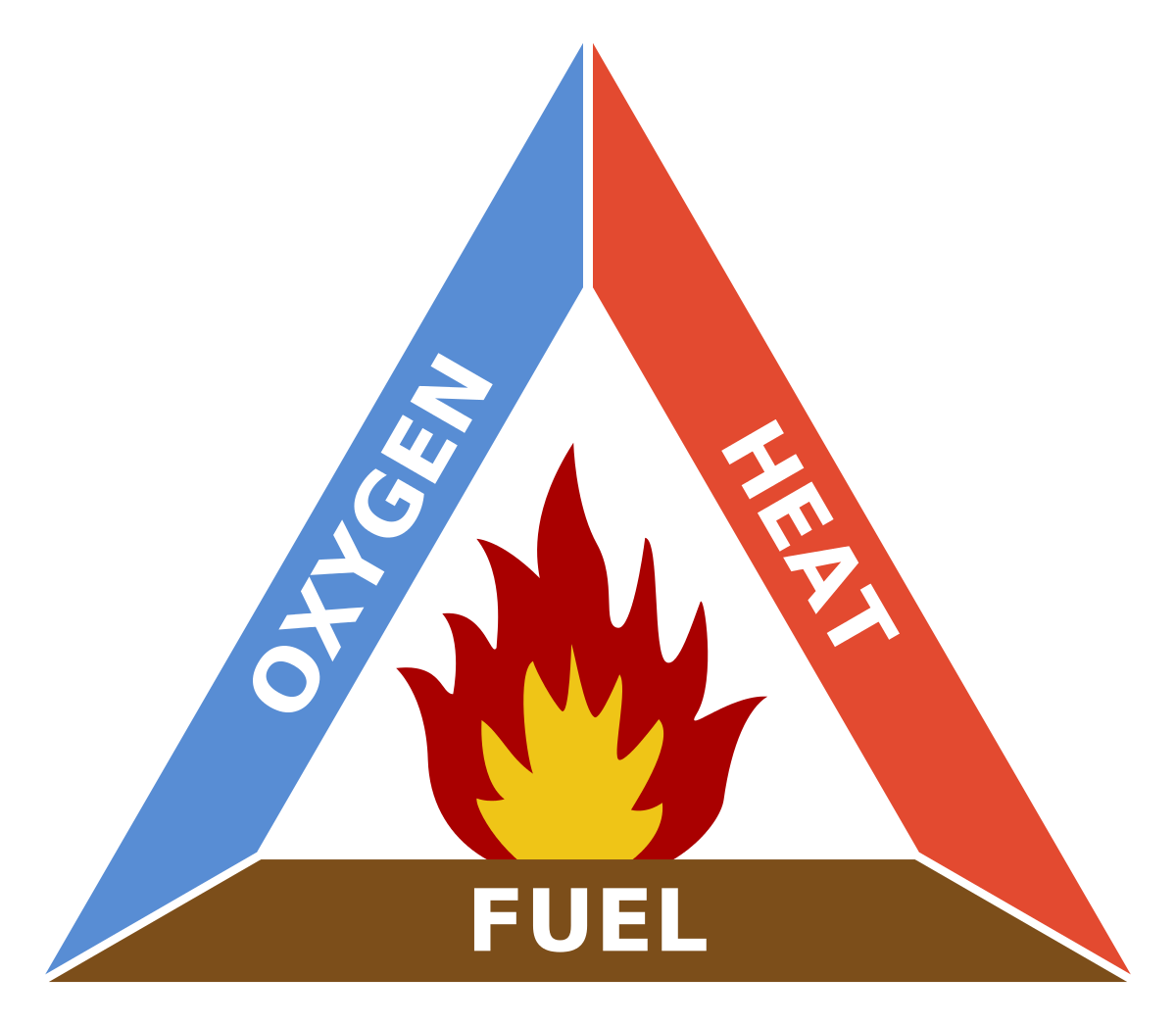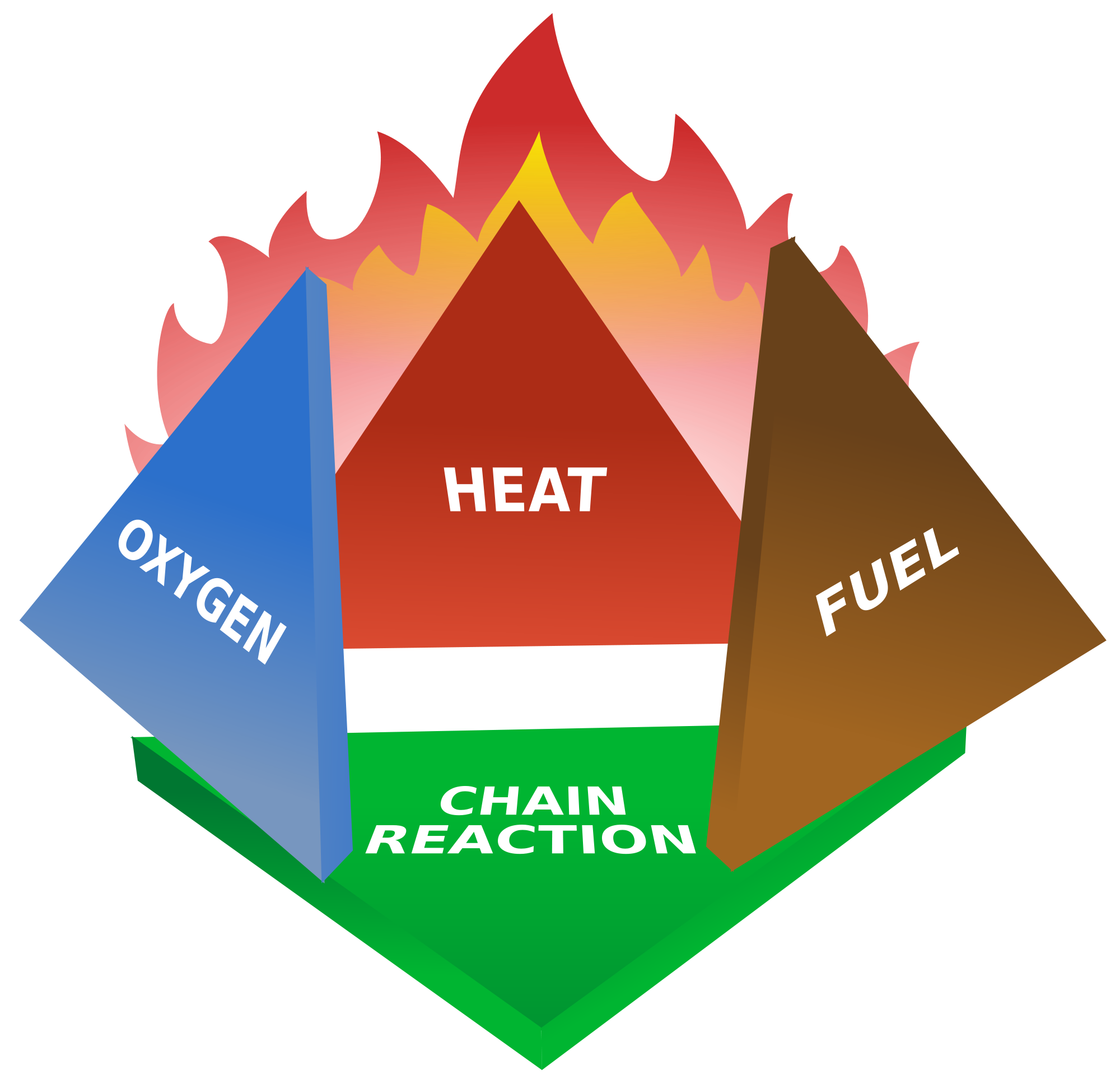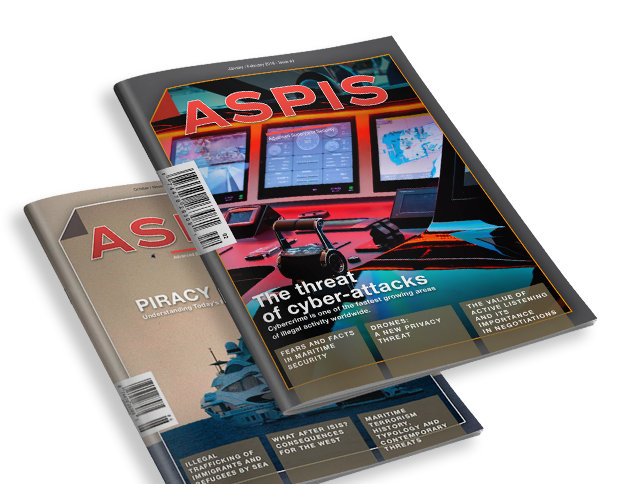Fire on board; Face the challenge
 Fire on a ship is one of the most dangerous incidents which can happen on board. In the event of fire, persons ashore often have available the immediate assistance of well-trained firefighting professionals. Mariners usually are alone aboard ship, and when fires occur at sea they must remain onboard and cope with these incidents to the best of their own abilities. These efforts, often because of lack of knowledge, training, and experience, have produced less than satisfactory results and at times have resulted in tragedy.
Fire on a ship is one of the most dangerous incidents which can happen on board. In the event of fire, persons ashore often have available the immediate assistance of well-trained firefighting professionals. Mariners usually are alone aboard ship, and when fires occur at sea they must remain onboard and cope with these incidents to the best of their own abilities. These efforts, often because of lack of knowledge, training, and experience, have produced less than satisfactory results and at times have resulted in tragedy.
Few words strike fear into a ship’s crew than “Fire on Board!”. But how the fire is caused? The fire triangles or combustion triangles or “fire diamond” are simple models for understanding the necessary ingredients for most fires. The triangle illustrates the three elements a fire needs to ignite: heat, fuel, and an oxidizing agent (usually oxygen). A fire naturally occurs when the elements are present and combined in the right mixture, meaning that fire is actually an event rather than a thing. A fire can be prevented or extinguished by removing any one of the elements in the fire triangle.
The fire triangle The fire tetrahedron
The fire tetrahedron represents the addition of a component in the chemical chain reaction, to the three already present in the fire triangle. Once a fire has started, the resulting exothermic chain reaction sustains the fire and allows it to continue until or unless at least one of the elements of the fire is blocked.
Combustion is the chemical reaction that feeds a fire more heat and allows it to continue. When the fire involves burning metals like lithium, magnesium, titanium, etc., it becomes even more important to consider the energy release.


In general, fires may be extinguished by removing one side of the fire triangle (fuel, heat, or oxygen) or by slowing down the rate of combustion. More specific:
a. Removing Fuel. Although it is not usually possible to remove the fuel to extinguish a fire, there may be circumstances in which it is possible. If part of the fuel that is near or actually on fire can safely be jettisoned over the side, do so as soon as possible. Also in the case of liquid fuel fires caused by leaking pipes or fittings, the fuel supply should be closed.
b. Removing Heat. The fire will go out if you can remove enough heat by cooling the fuel to below temperature at which it will support combustion. Heat may be transferred in three ways: by radiation, by conduction, and by convection. In the process known as radiation, heat is radiated through the air in all directions. Radiated heat is what causes you to feel hot when you stand near an open fire. In conduction, heat is transferred through a substance or from one substance to another by direct contact from molecule to molecule. Therefore, a thick steel bulkhead with a fire on one side can conduct heat from the fire and transfer the heat to the adjoining compartments. In convection, the air and gases rising from a fire are heated. These gases can then transfer the heat to other combustible materials that are within reach. Heat transferred by convection is a particular danger in ventilation systems. These systems may carry the heated gases from the fire to another location several compartments away. If there are combustibles with a low flash point within a compartment served by the same ventilation system, a new fire may start. To eliminate the heat side of the fire triangle, cool the fire by applying something that will absorb the heat.
c. Controlling Oxygen: Oxygen is the third component of the fire triangle. Oxygen is difficult to control because you obviously cannot remove the oxygen from the atmosphere that normally surrounds a fire. However, oxygen can be diluted or displaced by other substances that are noncombustible. For example, if a fire occurs in a closed space, it can be extinguished by diluting the air with carbon dioxide (C02) gas. This dilution must proceed to a certain point before the flames are extinguished. The point at which the dilution is enough to extinguish the fire can be reached faster if you quickly secure all ventilation systems to space.
d. Reducing the rate of Combustion: Dry chemical fire extinguishing agents do not extinguish fires by cooling or smothering. Instead, they are believed to interrupt the chemical reaction of the fuel and oxygen. This action reduces the rate of combustion, and the fire is extinguished quickly. Speed is very important in firefighting. If you allow a fire to burn without confining or extinguishing it, the fire can spread rapidly. A small fire in a trash can may spread to other combustibles and become a large fire that could affect several compartments or even the whole ship.
The method or methods used in any specific instance will depend upon the classification of the fire and the circumstances surrounding the fire. There are six classes of fire, Class A, Class B, Class C, Class D, “Electrical” and Class F:
a. Class A fires – Ordinary combustible materials: These are fires involving flammable solids, e.g. wood, cloth, rubber, paper, and some types of plastics. Class A fires are probably the easiest to extinguish as spraying them with water will cool the fire, removing the heat supply which is essential for the fire to burn. Water is the best extinguishing medium for Class A fires. Some Dry Chemical Powder (DCP) extinguishers are also used.
b. Class B fires – Flammable liquids: These are fires involving flammable liquids or liquefiable solids, e.g. petrol, oil, paint and also some waxes & plastics, but not cooking fats or oils. Fires involving these give off a lot of heat and tend to spread very quickly. They also produce thick, black toxic smoke, which can make these fires difficult to fight. The best approach for extinguishing a Class B fire is to use a foam fire extinguisher to smother the flames, as using water causes the fuel to scatter therefore spreading out the fire.
c. Class C fires – Flammable gases: Fires involving flammable gases or liquefied gases (like hydrogen, butane, methane, oxygen, acetylene etc.) are one of the most dangerous types of fire to fight. Before attempting to put the fire out, you should make sure that the gas supply is isolated first. Dry Chemical Powder is widely used for extinguishing gaseous fires. Its ability to cut the chain reaction in the combustion process makes it suitable for the purpose.
d. Class D fires – Combustible metals: Certain metals can burn if ignited, although it requires a lot of heat to ignite most metals, as they are good conductors and transfer heat away quickly to their surroundings. Water should not be used on Class D fires. It may add to the intensity and cause the molten metal to splatter. This, in turn, can extend the fire and inflict serious burns on those nearby. If a metal fire is spotted early on, specialist type D powder fire extinguishers can be effective, although it should be ensured that they are the specific dry powder type, suitable for use on metal fires.
e. Electrical fires (not classified, formerly Class E) - Electrical equipment: There is no “official” Class for electrical fires. Electricity is not a fuel; it does not burn like a fuel. However, it is a dangerous complication at a fire, because it is a source of heat and potential electric shock. Overloaded circuits, overloaded switchboards, overheating motors, faulty electrical equipment, damaged wiring etc., can all cause electrical fires. Before dealing with an electrical fire, the supply of electricity must be isolated as quickly as possible. As water and foam have the power to conduct electricity you should not attempt to put out the fire by putting water on the flames or by using foam and water-based extinguishers. Carbon dioxide and dry powder fire extinguishers are the only types of fire extinguishers recommended for safely tackling electrical fires. By turning the electrical source off, the fire can be fought by one of the other class of fire extinguishers.
f. Class F fires – Cooking oils: Class F fires are fires which involve cooking oil or fat. Though technically a sub-class of fires caused by flammable liquids or gases, they differ from conventional fires due to the extremely high temperatures involved. Never throw water over a Class F fire as this causes it to explode, spreading the fire and risking lives. When the fire is small, you might be able to use a fire blanket to put it out. Placing one over a fire in its early stages will smother it of oxygen and prevent a bigger fire. If that isn’t possible, then the only other safe way of extinguishing the fire is a wet chemical extinguisher. Wet chemical extinguishers contain a formula which cools the fire and then emulsifies to seal the surface and prevent re-ignition.
If a fire does occur, it is imperative that you know how to face it. Fire drills ensure everyone knows what to do when there is a fire. Training and drills should emphasize the importance of a rapid response team proceeding directly to the scene of a reported smoke/fire with fire extinguishers and without stopping to dress in firefighting gear. Training should also emphasize the importance of adopting a defensive firefighting posture after the initial response – the paramount requirement being rapid establishment of containment boundaries on all sides of the fire, e.g. by means of a deluge system. Crew required under regulations and flag state requirements, to conduct regular exercises to demonstrate an ability to deal with emergencies quickly and efficiently. Whatever way you decide to carry out fire drills on the yacht, you must do them regularly. Tips for good fire drills are as follows:
- Before carrying out the drill it is often useful to inform all crewmembers of that a fire drill is going to happen, providing them with specific details.
- Start with the alarm you normally use to get crew to the muster stations. This allows an immediate check to confirm everyone is accounted for and doing their duty.
- Occur in different locations on the vessel where a fire could possibly start.
- Have a sense of urgency.
- Time crew during the drill to see how long it takes them to do certain tasks.
- Make sure crew use the correct firefighting equipment at the scene.
- Check that your fire hoses are long enough and in good condition.
- Make sure crew know how to use all the different types of extinguishers, hose spray/jet nozzles, and pumps on the vessel.
- Make sure crew is familiar with the location of the emergency escape routes.
- Pay attention to any difficulties experienced as a result of the chosen escape routes, such as doors being difficult to open or exits being blocked.
- Make sure there is a way to stop the drill if a crew member is feeling uncomfortable.
- Always debrief after a fire drill. This can be an informal discussion afterward where “what if” scenarios, as well as deficiencies in the day’s exercise, can be discussed. Make sure everyone understands that it’s better to make a mistake in a drill than in a real emergency.
- Always question crew on their knowledge but also listen to their comments and suggestions. Crew members should not be afraid to make comment or ask questions.
- Make sure the records are kept and made while things are still fresh in your mind.
The best way to deal with fires on board ships is to prevent them rather than letting them occur. Some of the major causes of yacht fires are: fuel leaks in the engine compartment, overheating and ignition of cooking fat/grease in the galley, careless smoking, faulty or overloaded electrical wires/devices - electronic circuits/equipment, using of naked flames near flammable liquids/materials and overloaded laundry dryers.
But how to deal with a fire if one does break out and especially when the yacht is at sea? Some important steps are following:
- Raise the alarm and make an emergency call to the Coast Guard over VHF Channel 16 or by cell phone (or satellite phone).
- If possible, position the boat so that the fire is downwind.
- Inform all guests/ passengers and move them away from the fire.
- Make sure everyone puts on life jackets in case that you’re forced to abandon ship.
- Attempt to put out the fire. Quickly determine the class of fire, the appropriate equipment, and the extinguishing agent (use a hose, extinguisher, fire blanket etc.). If it is available using breathing apparatus. In order to increase the safety, it is important, when working with breathing apparatus, to act and work according to predefined and well-trained procedures. If you can’t extinguish the fire, get out of the area.
- If a burning object can be safely moved, get it over the side quickly.
- Stop the oxygen supply to the fire. If you can’t extinguish the fire, you must act quickly to close the compartment (turn off all ventilation fans to the compartments and close all the hatches and doors). Your goal is to stop all air getting to the fire so the oxygen supply will run out.
- Stop the fuel supply to the fire. Especially if there is a fire in the engine room, you might need to isolate the fuel supply. This decision must be made only by the Master because it will have an impact on vessel maneuverability, speed, power and firefighting and pumping capabilities.
- Activate fixed firefighting systems. Before you operate the system make sure all ventilation is stopped and all openings are closed and shut down as much machinery as possible. But most important is to ensure that everyone is out of the compartment.
- Prevent the spread of fire. You must monitor heat in surrounding compartments and, if they are hot, start boundary cooling. Use water sparingly and monitor flooding from boundary cooling water and activate pumps accordingly.
- Don’t re-enter the compartment too soon. Allow it to cool down and keep monitoring the temperature of the surrounding bulkheads and the deck above. Wait twice as long as you think is necessary and when you decide to enter through the door or hatch stay clear of the opening in case the rush of air re-ignites the fire.
- Maintain a watch on the area once the fire has been extinguished to monitor any re-flashes.
- If you cannot get the fire under control quickly, be prepared to abandon ship.
Finally, except for the reasons mentioned above, which can cause fire to a vessel, there is another case which is very difficult to deal with. Potential fire situations must include the case in which a fire would be a result of terrorism, piracy or another kind of criminal act (e.g. after an armed robbery in order to conceal their traces/fingerprints etc.). Especially for terrorist fire is an attractive weapon for several reasons. Igniting a fire requires little to no training. Fire and associated smoke can penetrate defenses with alarming lethality and makes crew’s response more difficult. The images of fire also increase media coverage, capturing world attention.
During a fire, as in other disasters, crews may experience a panic incident. The more so when this fire is a result of terrorism or piracy. Yacht crewmembers must rethink the way that they prepare their firefighting actions and anticipate the use of fire as a weapon, especially when combined with other attack methods. Efficient tackling of these situations can be achieved by continuous training and by practical drills onboard vessel.
Fire safety is particularly crucial for a yacht. Although a yacht’s fire is not common, if it happens the situation can get very bad, very quickly. In most cases, a fire starts as a small smoldering fire and after an incipient phase, it will start to grow. When it starts to grow it usually grows very quickly. Crew training and quick reaction to fire is the most important safety precautionary measures in order to stop the fire at first stage. A full understanding of fire as a weapon and associated implications for proper response are essential for a yacht's security, as it requires specific preplanned actions in order to address this specific threat. And bear in mind one very important thing: you must be ready for a fight fire at all times!
Bibliography
1. SOLAS Chapter II-2.
2. Passenger and No-Passenger Vessels Safety Guidelines, Maritime New Zealand.
3. Guidance Notes on Fire-fighting Systems, American Bureau of Shipping (ABS).
4. https://transportsafety.vic.gov.au/maritime-safety.
5. https://en.wikipedia.org/wiki/Fire_triangle.
6. https://en.wikipedia.org/wiki/Fire_class.
7. http://marineengineeringonline.com/category/safety-and-environmental-protection/fire-fighting/.
8. International Code for Fire Safety Systems (FSS Code), International Maritime Organization (IMO).
9. MGN 71 (M), Maritime Coastguard Agency (MCA).
10. https://ctc.usma.edu/fire-as-a-weapon-in-terrorist-attacks/
